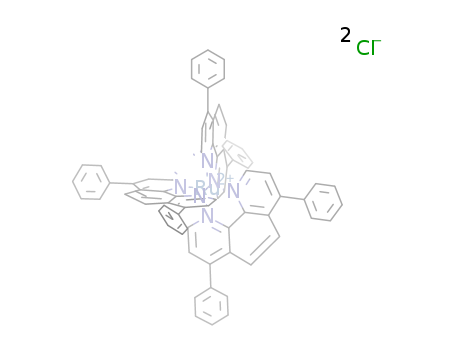- Chemical Name:CID 11980975
- CAS No.:36309-88-3
- Molecular Formula:C72H48 N6 Ru . 2 Cl
- Molecular Weight:1169.19
- Hs Code.:29339900
- European Community (EC) Number:609-229-6
- Mol file:36309-88-3.mol
Synonyms:36309-88-3;tris(4,7-diphenyl-1,10-phenanthroline)ruthenium(ii) dichloride;4,7-diphenyl-1,10-phenanthroline;ruthenium(2+);dichloride;tris(4,7-diphenyl-1,10-phenanthroline)ruthenium(ii)dichloride;CID 11980975;AT26877;A900992;Tris(4,7-diphenyl-1,10-phenanthroline)ruthenium dichloride





